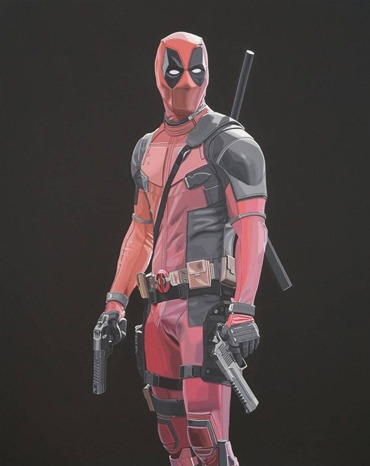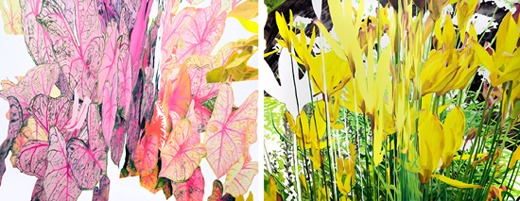
| Period| | 2019.12.04 - 2019.12.13 |
|---|---|
| Operating hours| | 10:00 - 19:00 |
| Space| | Alternative Space Loop |
| Address| | 20, Wausan-ro 29na-gil, Mapo-gu, Seoul, Republic of Korea |
| Closed| | New Year, Lunar New Year, Chuseok holidays |
| Price| | Free |
| Phone| | 02-3141-1377 |
| Web site| | 홈페이지 바로가기 |
| Artist| |
midiDICE, 남진우, 박지혜, 신창용, 안가영, 은유영, 함준서
|
정보수정요청



|
|
Exhibition Information




Virtual Memory Written by Yoon Je Won Cyberspace is the aggregation of all virtual memory. Countless video, images and texts are codified and stored in the sea of information that we call the internet. Information is saved on the server through the internet, and gaming history is saved as digital codes. All of this is played out in the universe we know as cyberspace. As more information is accumulated and more users use the data, cyberspace overflows its boundaries and trespasses into our reality with tremendous influence. The point in which online memory surpasses the amount stored offline is called “singularity.” Singularity is a terminology that involves futuristic technology but is widely used in the game industry. Since the beginning of postmodernism, everyone has been talking about the cyber age, yet no one has been able to define it clearly. At this point in time , however, computer games can provide a useful insight into understanding cyberspace, especially as the computer game industry represents an integral part of Korean culture today. As I was planning this exhibition, I imagined myself being at an internet cafe. After you pass the entrance hallway with dramatic posters on the wall, you sit in front of a computer and enter the cyberspace. Internet cafes were where you would meet up with the people that you encounter through various experiences online. For me, the internet cafe was a very special place that connected reality with the virtual, thanks to the owner who always left my seat reserved around the clock. There was a period, as I spent more and more time at the cafe, that the virtual would take over my reality and I would find infinite satisfaction from being immersed in it. At the same time, it was a true heterotopia where reality and the virtual coexist, since I did develop genuine offline friendship with those that I initially met online, and did gain financial profit by selling the items I collected online. Frankly, I did over-immerse myself in cyberspace, and as someone who researches computer games and art, I hoped to create an exhibition that would yield a deeper understanding about the games. Of course, there is no need to force others to understand the “subculture of a subculture” that only the over-fanatic gamers would comprehend. On the other hand our perspective of a culture can only extend to the degree that one has personally experienced it. I believe a more professional and microscopic examination on the subject can lead to concrete methodologies that help us understand the bigger picture. This exhibition, as a whole, is designed as a game. The viewers enter the game, and as they play and go through the process of experiencing, perceiving and remembering, they will be able to trace the stages of the simulacre that emerge. On the other hand, it can also form interesting discourses on how our society perceives games according to how individual viewers, as independent memory devices, accept and remember the experience. As we play the game, there is a moment when we are confronted with pure simulacre. Every game has its own story and worldview, along with its different demands for the player. When one is completely immersed in the fantasy of the game, it is difficult to maintain advantage while competing with others or in a PVP (Player vs. Player) situation. Only the gamers who can utilize the game’s system in the most effective and efficient way, can get ahead of the others. In other words, the gamer should be able to understand that a tree inside a game is not just a tree but a structure to be utilized, organize their collected items in an efficient setting rather than getting lost in their story or attach sentimental value to them. They should also be able to edit their UI (user interface) and be able to discover and take advantage of the information and support programs that are not officially provided. In the end, the gamers on top of their game may seem like true heroes who can see through the structure of the fantasy world, but in reality, they are a montage, representing a manipulated truth that is completely fragmented and modularized. The first floor stage of the exhibition space, which presents the work of Shin Chang Yong (b.1978), An Ga Young (b.1985), Eun yu young (b.1981), Nam, jinu (b.1985), aesthetically examines the change of images that operate in games and interprets it in their unique perspective. Between the first and second floor, midiDICE’s stage invites the viewers to arrange the individual tile (text) pieces to deduct information from them. If the first stage of the exhibition invites the viewers into the game and explore the possibilities of “game as art” rather than game as just play, the next stage of the exhibition, which presents the work of Ji-Hye Park (b.1992), An Ga Young (b.1985) and Jun seo Hahm (b.1975), delves into examining “virtual memory” on a deeper level. The artists will be faced with virtual memory and save the journey in their own ways. What would be the first thing we physically encounter as we enter the cyberspace? In this stage, we first encounter interface. Our information that is scattered all over the cyberspace leaves its fragmented and random traces somewhere in virtual memory. We try to control it, though it is often beyond our control, and most of the time, we fail. Determined by interface that is forgotten, unadapted and beyond our grasp, our right to control is handed over to others, which is then saved or deleted. Ultimately, the accumulated data in time and space begin to collect images of the object. In turn, it becomes a perspective of the object and forms big data through repetition and connection of memory. Let’s think about the recent trend of A.I. and how its mechanism is based on deep learning (machine learning) through memory. As the viewers face the ecosystem of virtual organisms based on an A.I algorithm, one can only imagine what these blocks of data will become as the exhibition evolves from beginning to end. For the exhibition, a group of participating artists were asked to restage the exhibition space and its surroundings by activating their virtual memory. The combination of reality and the artists’ virtual memory stores the site of the exhibition space not through physical vision but through the vision of augmented reality. Therefore, the design of the exhibition space reflects the essence of games by creating its own cyberspace. Inside, the viewers are invited to play, and with layered imagination, it is transformed into a virtual space that resembles out reality. What could this place be? Perhaps it would be nice for you, for us to leave a small trace behind as we wander through this contemporary arcade. No one can know what kind of information is saved by the viewers, but whether they continued or stopped saving, or even if they ended up storing more that they intended, the information will continue to exist as fragments of the virtual memory in this vast network. As we delve deeper into examining the subculture of computer games and approach it from different perspectives, the layers of information become accumulated and repeated. Through this process is ultimately how we will find clues to understanding the cyberspace and face it directly. I once devoted my life to killing the dragon, destroying the villain and becoming the fiercest gladiator in the world of games, as I sat around with my friends at an internet cafe all day. Although those friends are not here with me, I continue to listen, question and speak about our experiences together with my new colleagues in the art world. Through this process, I hope a new discourse on cyberspace can be formed. Recently, I have been researching and developing an art game which integrates computer games, A.I. and art. This text represents the root of its development. At the same time, if we think of an exhibition as a computer program, we can also understand individual artists and their work as independent units of virtual memory. Similar to the digital mechanism, they can be combined into a single program, then reverted back to its individual units of information. In this context, an art exhibition can be regarded as an art game in essence, and a new discourse on the digital interrelationship between the artists, curator and exhibition can emerge.
